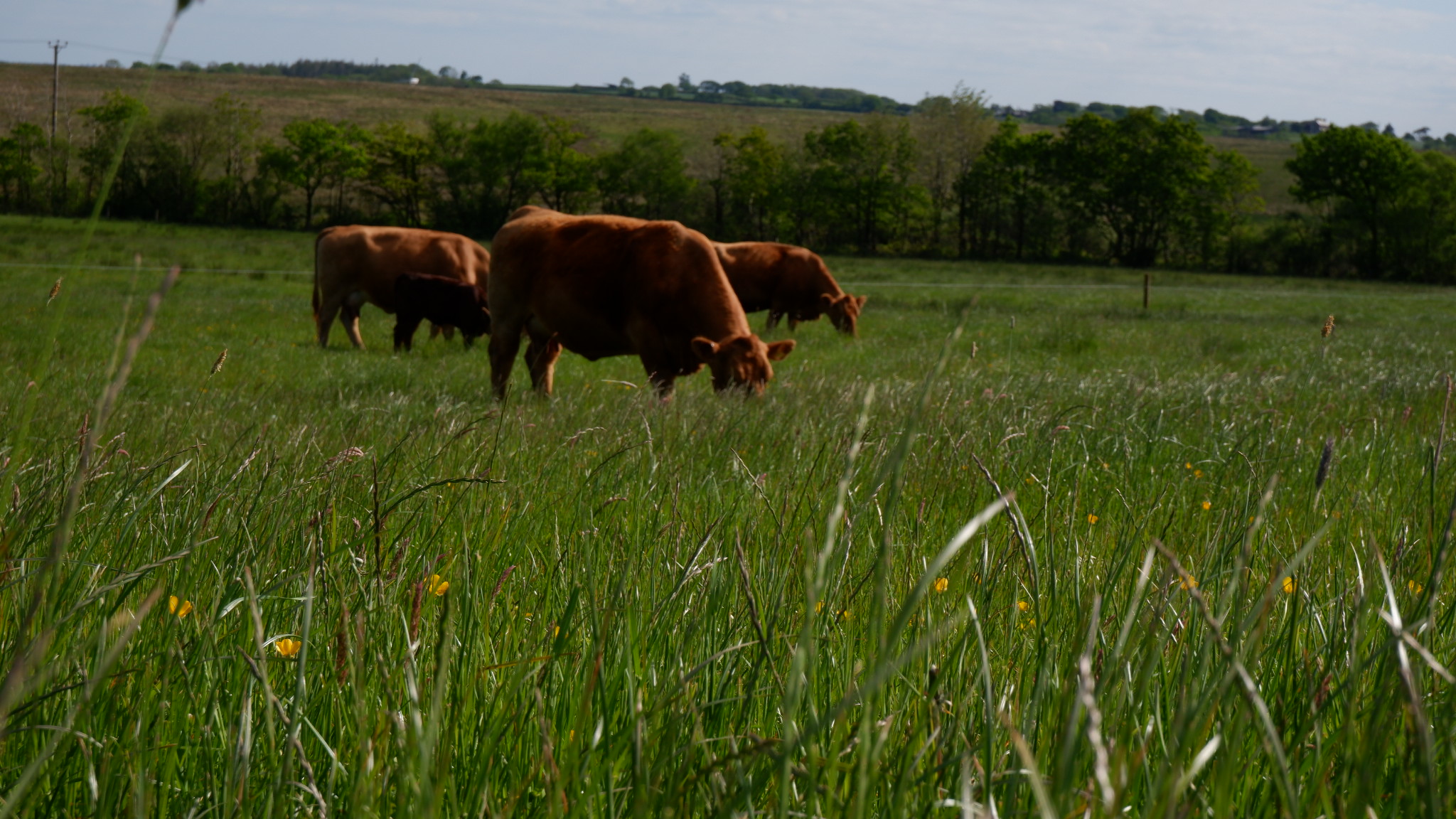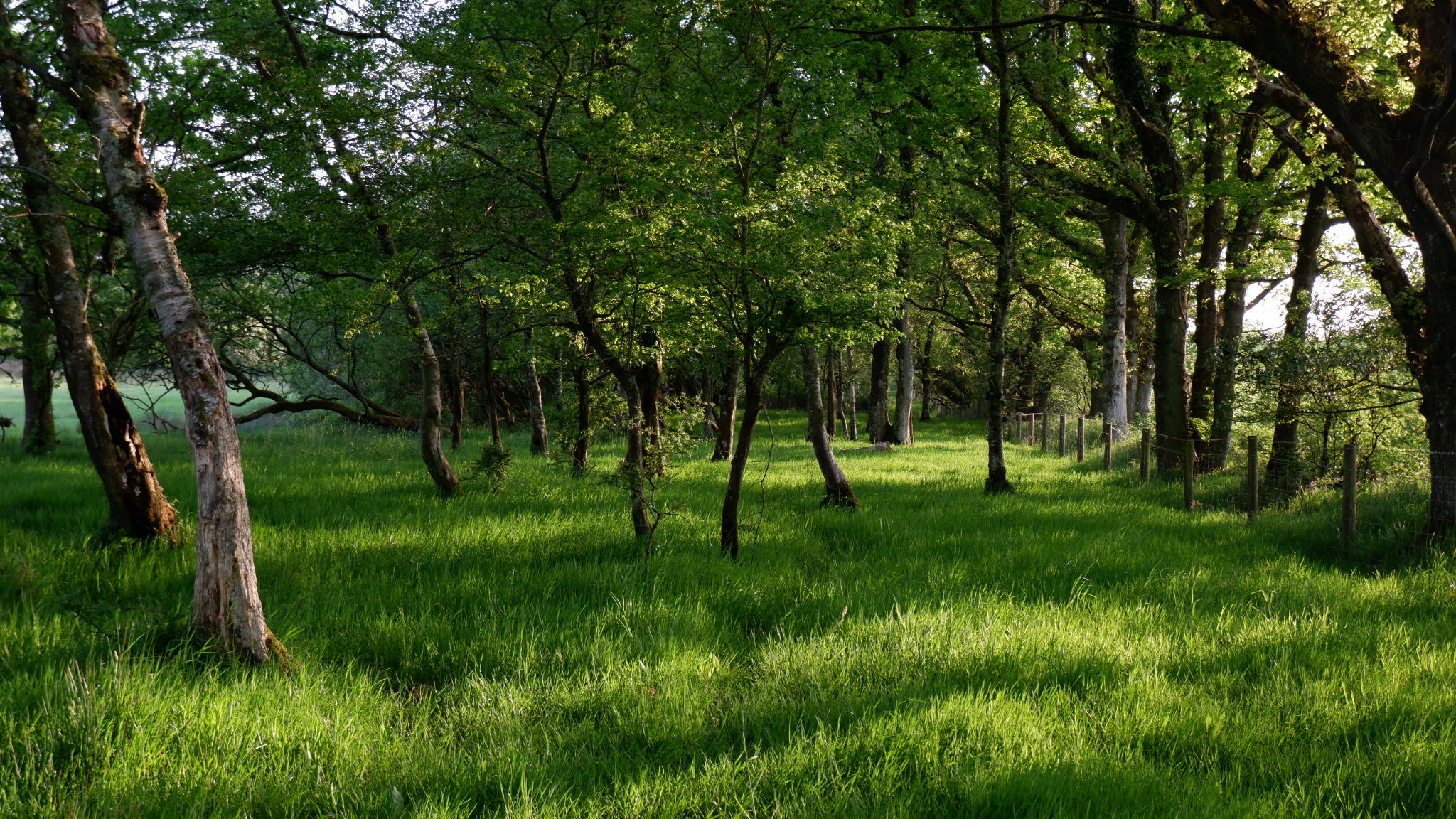
Welcome to our
Carbon Neutral Farm
Hello, we are Henry and Bryony a young couple, and with our two children Beatrix (3) and Harold (1) we farm on the Devon/Cornwall border.
Our perspective on farming changed when we had Beatrix, and the climate debate came to the forefront of media and debate. The Penny dropped, it became our mission to have a truly regenerative, sustainable and ultimately Carbon Neutral Farm.
How are we doing this?
With all the news reports and documentaries circulating, you would be forgiven for thinking that Livestock Farming is Bad for the environment and incompatible with nature. This simply does not have to be the case. Below are the steps we are taking.
Herbal and Legume Leys
A ley is a term to describe a crop rotation. We have recently started to introduce Herbal and legume leys into our grazing system. They have various root lengths bringing up minerals deep underground for cattle to graze reducing the need to buy in minerals.
They fix nitrogen from the air into the soil acting as a natural nitrate fertiliser reducing the need to buy in chemical fertiliser. They have tannins that improve the cattle’s absorption of protein making the cattle more efficient. They have chemicals that reduce the production of methane in ruminants. They have anthelmintic properties which means they kill off parasitic worms in Cattle which reduces the need for chemical wormers which can be detrimental to soil health. Since their roots can go almost 10x deeper than grass roots they can make carbon-capturing in soil much more efficient.
Therefore a well managed species-rich pasture can(click on link to get more info):


Silvio Pasture
With recent dry summers and wet winters, we are really seeing the importance of Trees and Woodland, they play an integral role in keeping our soil healthy and release and absorb moisture when required. The cattle love sheltering in them from the elements and they also produce a much-needed feed source for cattle.
Trees, like Herbs and legumes bring up minerals from far down below and deposit them in the leaves. These are either grazed by the cattle or fall onto the ground which puts minerals into the grass below creating a fertile pasture for the cattle to eat. Trees also have a whole raft of medicinal properties which help us have healthy cattle and bring our reliance on antibiotics to almost zero. And of course, they capture Carbon Dioxide from the atmosphere.
Banks and Hedges
On our smallish 120acre Family farm we have almost 7km of Hedgerows. Hedgerows are an overlooked part of our Farms ecosystem. Some are over 500years old and have been used by generations of wildlife to ensure a dynamic ecosystem. Hedgerows also have an abundance of plants and flowers which cattle Graze each are rich in various elements and minerals which the cattle need from time to time.
Indeed, Irish travellers used to call Hedgerows the long acre as they were such an important feed stuff for their livestock. They provide shade and shelter for cows and their calves. The hedges and mature trees also sequester Carbon out of the atmosphere.
Our Cattle
We are a closed Beef Suckler Herd. This means we do not buy any cattle in, instead, we breed, calve, grow and finish all our own Cattle. Therefore, we know everything about our cattle from their breeding to their medical history and the added bonus of reduced road miles.
We have a variety of breeds with an emphasis on the native breeds, such as the South Devon, Red Ruby Devon and Aberdeen Angus. The native breeds tend to have smaller meat yields but are more efficient on a pasture-based diet reducing the need for bought-in feed.

